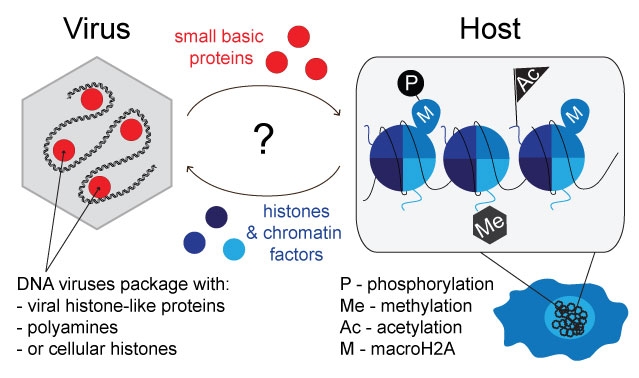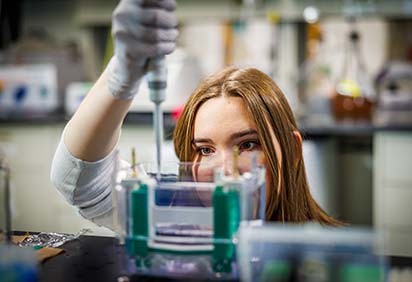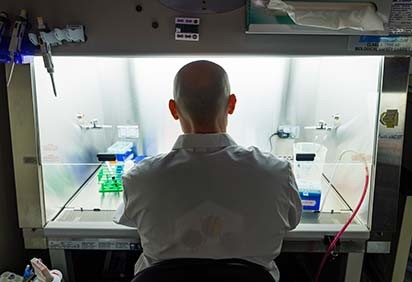Research Overview
Our research merges cutting-edge chromatin technology with virology to reveal fundamental chromatin functions and provide new insight into virus infection.
Much like the cellular genome, viral genomes are compacted in virus particles with small basic molecules to maximize space and be poised for gene expression. Some DNA viruses use cellular histone proteins to compact their genomes whereas others use small basic molecules. Adenoviruses encode their own histone-like protein, called protein VII, that forms a ‘beads on a string’ assembly with the viral genome. We are interested in how adenovirus manipulates host chromatin through protein VII and more broadly how DNA viruses use histones or histone-like proteins for dual function: to compact their genomes and control host genomes.

Current projects in the lab focus on the following questions:
- How does adenovirus protein VII impact nuclear architecture? The expression of protein VII in cells is sufficient to increase nuclear size and markedly disrupt the appearance of cellular chromatin (Avgousti et al., Nature 2016 and J. Virol. 2017). Current efforts focus on the molecular mechanisms of this disruption.
- How does herpes simplex virus (HSV-1) affect host chromatin? Epi-proteomic analysis (Kulej and Avgousti et al., MCP 2017) revealed that hundreds of host proteins are regulated during lytic HSV-1 infection, including many chromatin factors. Projects focus on how HSV-1 regulates host chromatin factors for viral benefit.




Fred Hutchinson Cancer Center | 1100 Fairview Ave. N., Seattle, WA 98109
© 2025 Fred Hutchinson Cancer Center, a 501(c)(3) nonprofit organization.
© 2025 Fred Hutchinson Cancer Center, a 501(c)(3) nonprofit organization.